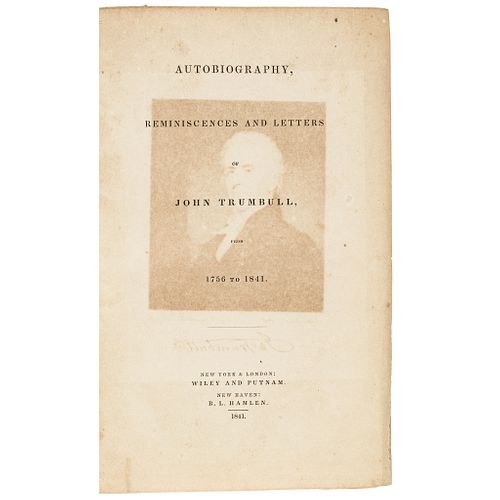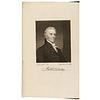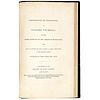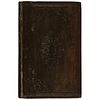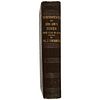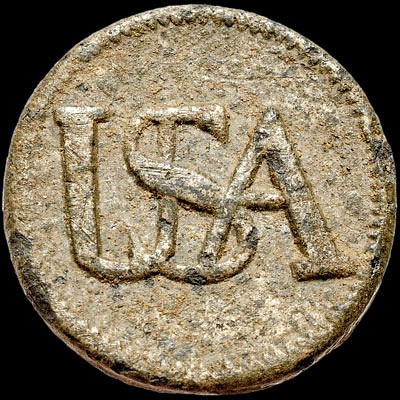1841 Rare 1st Edition The Painter of the Revolution John Trumbull Autobiography
Lot 142
Estimate:
$500 - $600
Absentee vs Live bid
Two ways to bid:
- Leave a max absentee bid and the platform will bid on your behalf up to your maximum bid during the live auction.
- Bid live during the auction and your bids will be submitted real-time to the auctioneer.
Bid Increments
| Price | Bid Increment |
|---|---|
| $0 | $10 |
| $200 | $20 |
| $300 | $25 |
| $500 | $50 |
| $1,000 | $100 |
| $2,000 | $200 |
| $3,000 | $250 |
| $5,000 | $500 |
| $10,000 | $1,000 |
| $20,000 | $2,000 |
| $30,000 | $2,500 |
| $50,000 | $5,000 |
| $100,000 | $10,000 |
| $200,000 | $20,000 |
| $300,000 | $25,000 |
| $500,000 | $50,000 |
About Auction
By Early American History Auctions
Aug 21, 2021
Set Reminder
2021-08-21 12:00:00
2021-08-21 12:00:00
America/New_York
Bidsquare
Bidsquare : Autographs - Historic & Political Americana - Militaria & Guns
https://www.bidsquare.com/auctions/early-american-history-auctions/autographs---historic-political-americana---militaria-guns-7321
335 Lots of Rare, Historic Autographs, Americana, Civil War Era, George Washington, Revolutionary War Era, Colonial America, Federal Period, War of 1812, Colonial Currency & more... Early American History Auctions auctions@earlyamerican.com
335 Lots of Rare, Historic Autographs, Americana, Civil War Era, George Washington, Revolutionary War Era, Colonial America, Federal Period, War of 1812, Colonial Currency & more... Early American History Auctions auctions@earlyamerican.com
- Lot Description
Post-Revolutionary War to Civil War
1841 "The Painter of the Revolution" John Trumbull First Edition Autobiography, Reminiscences and Letters from 1756 to 1841 with Appendix of Trumbull's Paintings at Yale
1841-Dated First Edition Book titled, "Autobiography, Reminiscences and Letters of John Trumbull, from 1756 to 1841", 439 pages, 23 Engravings & Fold-out Maps drawn during the Revolutionary War, Fine.
John Trumbull is known as "The Painter of the Revolution" but this 439 page book shows that he was so much more. This book measures 9.75" x 6.25" and includes 23 engravings, fold-out maps drawn during the Revolutionary War, and a suite of 5 Portraits of Creek leaders from 1789 here published for the first time. Period blindstamped brown cloth covers and a gold-gilt spine. Rare First Edition. The Appendix is a Catalogue of Trumbull's Paintings from a contemporaneous exhibition at Yale University in New Haven, Connecticut. Some spine joints loose; closed tear to front endpaper conserved; interior with some print offsetting and occasional minor spotting. Trumbull wrote his Autobiography in 1835 and it was supplemented here by the above-mentioned appendix and catalog. Of particular interest here is Trumbull's relationships with his subjects, subscriptions to his paintings and engravings, and how his relationship with Thomas Jefferson grew, then died. This scarce historical book gives insights found nowhere else.
John Trumbull (June 6, 1756-November 10, 1843) was an American artist of the early independence period, notable for his historical paintings of the American Revolutionary War, of which he was a veteran. He has been called "The Painter of the Revolution". Trumbull's Declaration of Independence (1817), one of his four paintings which hang in the United States Capitol Rotunda, is used on the reverse of the current Two-dollar bill.
John Trumbull, born in Lebanon, Connecticut, was a great American painter, architect, and author, whose historical paintings of major episodes in the American Revolution form a unique record of that conflict's events and participants.
Trumbull was the son of the Connecticut governor Jonathan Trumbull (a first cousin to the poet John Trumbull). A boyhood injury to his left eye made him virtually monocular. After graduating from Harvard College in 1773, he worked as a teacher. During the American Revolution he served as an aide to General George Washington and achieved the rank of colonel.
In 1780 Trumbull went to London via France, but, in reprisal for the hanging of the British agent Major John Andr by the Americans, he was imprisoned there. Once released, he returned home but subsequently went back to London by 1784 to study with the painter Benjamin West.
At the suggestion of West and with the encouragement of Thomas Jefferson, Trumbull about 1784 began the celebrated series of historical paintings and engravings that he was to work on sporadically for the remainder of his life. From 1789 he was in the United States, but he returned to London in 1794 as secretary to John Jay. He remained there for 10 years as a commissioner for the implementation of the Jay Treaty.
During this period, in 1800, he married Sarah Hope Harvey, an English amateur painter. Moving back and forth between England and the United States, in 1808 he attempted portrait painting in London but met with little success. From 1815 to 1837 he maintained a rather unsuccessful studio in New York City.
In 1817 Trumbull was commissioned by the U.S. Congress to paint four large pictures in the Rotunda of the Capitol at Washington, D.C.: General George Washington Resigning His Commission, Surrender of Lord Cornwallis, Surrender of General Burgoyne, and, best known of all, Declaration of Independence.
This series, which he completed in 1824, was based on the small and superior originals of these scenes that he had painted in the 1780s and '90s. In 1831 Benjamin Silliman, a professor at Yale, established the Trumbull Gallery at Yale, the first art gallery at an educational institution in America. Trumbull gave his best works to this gallery in exchange for an annuity.
- Shipping Info
-
Early American provides in-house worldwide shipping. Please contact us directly if you have questions about your specific shipping requirements.
-
- Buyer's Premium



 EUR
EUR CAD
CAD AUD
AUD GBP
GBP MXN
MXN HKD
HKD CNY
CNY MYR
MYR SEK
SEK SGD
SGD CHF
CHF THB
THB